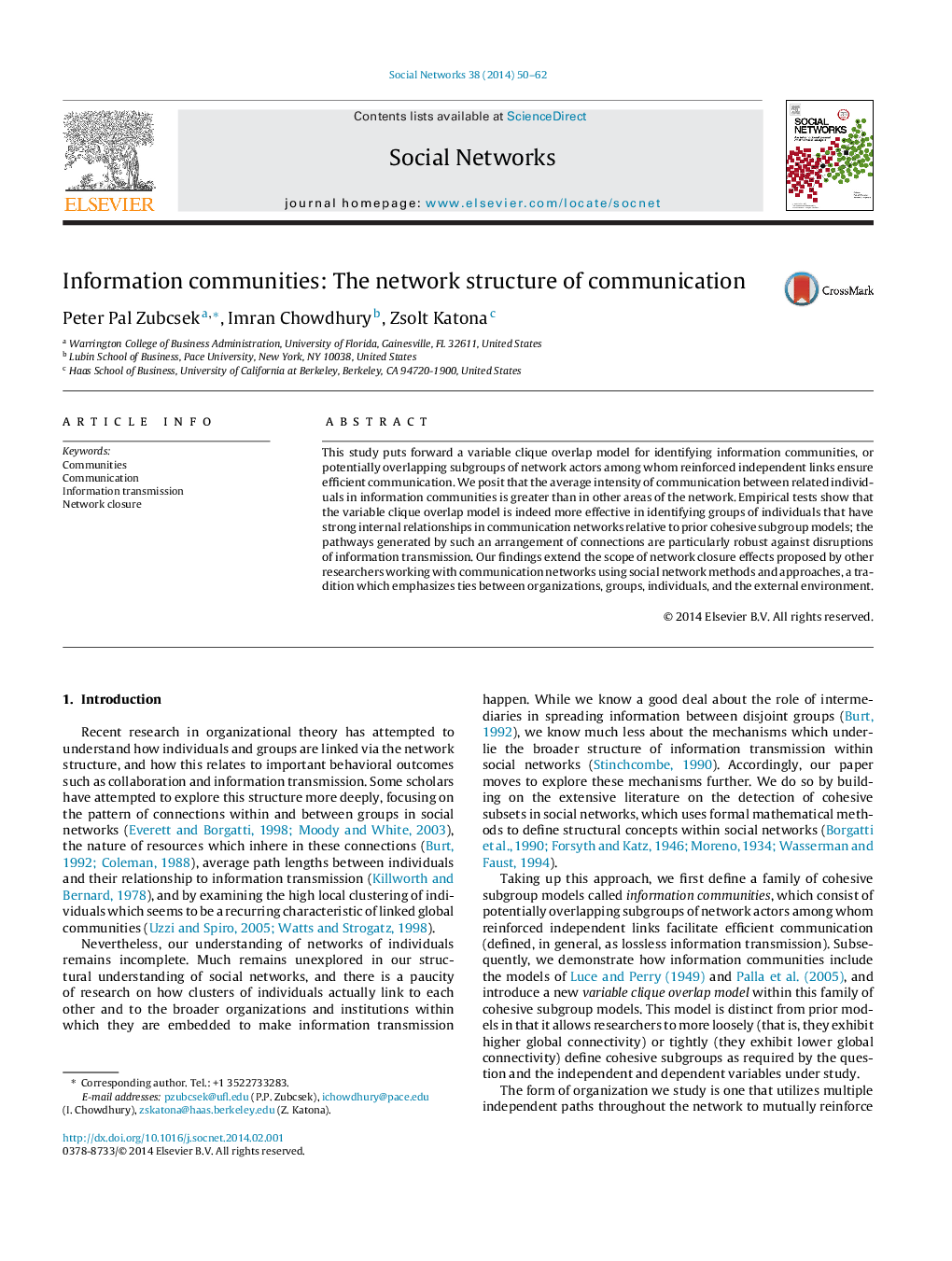| Article ID | Journal | Published Year | Pages | File Type |
|---|---|---|---|---|
| 1129262 | Social Networks | 2014 | 13 Pages |
•We present a model for finding cohesive groups in communication networks.•Information communities are defined as clusters of the maximal cliques in the network.•Information theoretic assumptions lead to a specific “variable overlap” model.•We compare cohesive groups generated by various models on two communication networks.•Our model helps predict link intensity from the structure of links more than others.
This study puts forward a variable clique overlap model for identifying information communities, or potentially overlapping subgroups of network actors among whom reinforced independent links ensure efficient communication. We posit that the average intensity of communication between related individuals in information communities is greater than in other areas of the network. Empirical tests show that the variable clique overlap model is indeed more effective in identifying groups of individuals that have strong internal relationships in communication networks relative to prior cohesive subgroup models; the pathways generated by such an arrangement of connections are particularly robust against disruptions of information transmission. Our findings extend the scope of network closure effects proposed by other researchers working with communication networks using social network methods and approaches, a tradition which emphasizes ties between organizations, groups, individuals, and the external environment.
